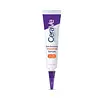What's inside
What's inside
 Key Ingredients
Key Ingredients

 Benefits
Benefits

 Concerns
Concerns

 Ingredients Side-by-side
Ingredients Side-by-side

Water
Skin Conditioning3-O-Ethyl Ascorbic Acid
Skin ConditioningKojic Acid
AntioxidantAloe Barbadensis Leaf Juice
Skin ConditioningArctostaphylos Uva-Ursi Leaf Extract
Skin ConditioningBiotin
AntiseborrhoeicCamellia Oleifera Leaf Extract
AstringentCitric Acid
BufferingCorallina Officinalis Extract
Skin ConditioningCurcuma Longa Root Extract
MaskingEthylhexylglycerin
Skin ConditioningGlycerin
HumectantGlycyrrhiza Glabra Root Extract
BleachingHyaluronic Acid
HumectantHydroxyethylcellulose
Emulsion StabilisingLactobacillus/Papaya Fruit Ferment Extract
AbrasiveLecithin
EmollientMaltodextrin
AbsorbentMelia Azadirachta Flower Extract
Skin ConditioningMelia Azadirachta Leaf Extract
Skin ConditioningOcimum Basilicum Extract
AntioxidantOcimum Sanctum Leaf Extract
Skin ConditioningPhenoxyethanol
PreservativePhyllanthus Emblica Fruit Extract
HumectantPotassium Sorbate
PreservativePullulan
Pyrus Malus Fruit Extract
Skin ConditioningSaccharomyces/Xylinum/Black Tea Ferment
Skin ConditioningSalicylic Acid
MaskingSclerotium Gum
Emulsion StabilisingSilica
AbrasiveSodium Benzoate
MaskingSodium Citrate
BufferingTetrasodium EDTA
Tocopherol
AntioxidantXanthan Gum
EmulsifyingWater, 3-O-Ethyl Ascorbic Acid, Kojic Acid, Aloe Barbadensis Leaf Juice, Arctostaphylos Uva-Ursi Leaf Extract, Biotin, Camellia Oleifera Leaf Extract, Citric Acid, Corallina Officinalis Extract, Curcuma Longa Root Extract, Ethylhexylglycerin, Glycerin, Glycyrrhiza Glabra Root Extract, Hyaluronic Acid, Hydroxyethylcellulose, Lactobacillus/Papaya Fruit Ferment Extract, Lecithin, Maltodextrin, Melia Azadirachta Flower Extract, Melia Azadirachta Leaf Extract, Ocimum Basilicum Extract, Ocimum Sanctum Leaf Extract, Phenoxyethanol, Phyllanthus Emblica Fruit Extract, Potassium Sorbate, Pullulan, Pyrus Malus Fruit Extract, Saccharomyces/Xylinum/Black Tea Ferment, Salicylic Acid, Sclerotium Gum, Silica, Sodium Benzoate, Sodium Citrate, Tetrasodium EDTA, Tocopherol, Xanthan Gum
Water
Skin ConditioningAscorbic Acid
AntioxidantGlycerin
HumectantDimethicone
EmollientCetearyl Ethylhexanoate
EmollientAlcohol Denat.
AntimicrobialSodium Hydroxide
BufferingAmmonium Polyacryloyldimethyl Taurate
Emulsion StabilisingPanthenol
Skin ConditioningCeramide NP
Skin ConditioningCeramide AP
Skin ConditioningCeramide EOP
Skin ConditioningCarbomer
Emulsion StabilisingCetearyl Alcohol
EmollientBehentrimonium Methosulfate
Sodium Hyaluronate
HumectantSodium Lauroyl Lactylate
EmulsifyingCholesterol
EmollientPhenoxyethanol
PreservativeTocopheryl Acetate
AntioxidantDisodium EDTA
Isopropyl Myristate
EmollientCaprylyl Glycol
EmollientXanthan Gum
EmulsifyingPhytosphingosine
Skin ConditioningEthylhexylglycerin
Skin ConditioningWater, Ascorbic Acid, Glycerin, Dimethicone, Cetearyl Ethylhexanoate, Alcohol Denat., Sodium Hydroxide, Ammonium Polyacryloyldimethyl Taurate, Panthenol, Ceramide NP, Ceramide AP, Ceramide EOP, Carbomer, Cetearyl Alcohol, Behentrimonium Methosulfate, Sodium Hyaluronate, Sodium Lauroyl Lactylate, Cholesterol, Phenoxyethanol, Tocopheryl Acetate, Disodium EDTA, Isopropyl Myristate, Caprylyl Glycol, Xanthan Gum, Phytosphingosine, Ethylhexylglycerin
 Reviews
Reviews

Ingredients Explained
These ingredients are found in both products.
Ingredients higher up in an ingredient list are typically present in a larger amount.
Ethylhexylglycerin (we can't pronounce this either) is commonly used as a preservative and skin softener. It is derived from glyceryl.
You might see Ethylhexylglycerin often paired with other preservatives such as phenoxyethanol. Ethylhexylglycerin has been found to increase the effectiveness of these other preservatives.
Glycerin is already naturally found in your skin. It helps moisturize and protect your skin.
A study from 2016 found glycerin to be more effective as a humectant than AHAs and hyaluronic acid.
As a humectant, it helps the skin stay hydrated by pulling moisture to your skin. The low molecular weight of glycerin allows it to pull moisture into the deeper layers of your skin.
Hydrated skin improves your skin barrier; Your skin barrier helps protect against irritants and bacteria.
Glycerin has also been found to have antimicrobial and antiviral properties. Due to these properties, glycerin is often used in wound and burn treatments.
In cosmetics, glycerin is usually derived from plants such as soybean or palm. However, it can also be sourced from animals, such as tallow or animal fat.
This ingredient is organic, colorless, odorless, and non-toxic.
Glycerin is the name for this ingredient in American English. British English uses Glycerol/Glycerine.
Learn more about GlycerinPhenoxyethanol is a preservative that has germicide, antimicrobial, and aromatic properties. Studies show that phenoxyethanol can prevent microbial growth. By itself, it has a scent that is similar to that of a rose.
It's often used in formulations along with Caprylyl Glycol to preserve the shelf life of products.
Water. It's the most common cosmetic ingredient of all. You'll usually see it at the top of ingredient lists, meaning that it makes up the largest part of the product.
So why is it so popular? Water most often acts as a solvent - this means that it helps dissolve other ingredients into the formulation.
You'll also recognize water as that liquid we all need to stay alive. If you see this, drink a glass of water. Stay hydrated!
Learn more about WaterXanthan gum is used as a stabilizer and thickener within cosmetic products. It helps give products a sticky, thick feeling - preventing them from being too runny.
On the technical side of things, xanthan gum is a polysaccharide - a combination consisting of multiple sugar molecules bonded together.
Xanthan gum is a pretty common and great ingredient. It is a natural, non-toxic, non-irritating ingredient that is also commonly used in food products.
Learn more about Xanthan Gum